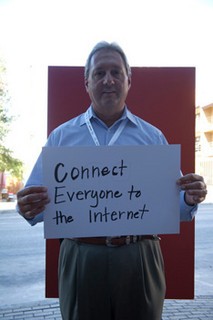The government’s broken promise of a digital strategy for Canada
Every time you open your high-priced telecom bills, think about how the government still doesn't have a plan for an affordable, accessible digital future. Help shape that future, and tell your MP that Canadians deserve better - send the citizen-centric OpenMedia.ca action plan to your MP now: http://openmedia.ca/report -- It seems like every year or so, I find myself irately writing a blog post about Canada’s lack of digital strategy. This year, despite the promises of Industry Minister Christian Paradis, is sadly no different.
The long-awaited digital strategy becomes more critical every year that Canada continues to lag behind the rest of the industrialized world: We’re failing when it comes to Internet access, speed, and cost. With a growing pro-Internet community, a CRTC that finally puts the public interest first, and innovators lining up to create groundbreaking online services, our government should be working to ensure Canada becomes a global leader in all things digital.
At least twice in 2012—in April at the Canada 3.0 Digital Media Forum and in August at the the Economic Club of Canada—Paradis promised Canadians a digital strategy. “I will launch a Canadian-made digital economy strategy by the end of the year,” stated Paradis at the latter event—there’s nothing unclear about that.
It’s not the first time that the Conservative government has raised our hopes: the previous Industry Minister, Tony Clement, discussed plans for a digital strategy in June 2009, and officially announced plans for it a year later. A public consultation—albeit one shaped almost exclusively through closed-door meetings with Industry lobbyists, and which drew much criticism for its failure to be accessible to citizens—took place over summer 2010 (OpenMedia.ca endorsed a consensus submission, which you can find here). This was followed, however, by a great deal of silence on the issue, including a disappointing lack of vision in the Conservatives’ 2011 election platform.
After all these years of waiting with increasingly little patience for the digital strategy, Paradis’ promises in 2012 sparked some hope. Many of you sent copies of OpenMedia.ca’s crowdsourced Action Plan for a Connected Canada to your MPs, and requested that they meet with us. Many, including eight Conservative MPs, did sit down with members of the OpenMedia.ca team, but although the tides are slowly turning, the absence of a digital strategy persists.
However, as equally exasperated tech blogger Peter Nowak notes, our fury over the delay of the digital strategy should not be mistaken for a call for the government to simply slap something together. He writes:
Yet, the government could do worse. It could, as many fear, release a digital strategy that is low on specifics and without any real teeth. Such a plan would be a disservice – Canada is behind in many ways, from web usage by businesses to internet access pricing to research and development spending to venture capital access. There are many problems to be fixed, so any digital strategy must take specific actions to get the country back on the right track.
The other danger with any sort of digital plan is the tendency to throw money at a problem in the hopes that it’ll fix itself. That’s also the wrong way to go, since government-provided funds are often squandered without any concrete results to show at the end.
Most importantly, a digital strategy must be bold. There is no sense in aiming for the future if you’re not aiming high. Timidity has no place in such a plan.
At this point, Canadians want more than just talk. If the government wants to restore our trust, it will need to meaningfully address the digital deficit, and other key communications issues that matter to this generation of engaged and active pro-Internet Canadians. A thoughtful citizen-centric digital strategy should form a key part of any upcoming policy agenda.



 Take action now!
Take action now!
 Sign up to be in the loop
Sign up to be in the loop
 Donate to support our work
Donate to support our work